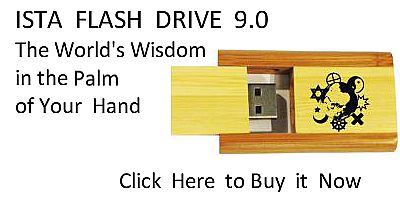
Sacred Texts Japan Index Previous Next

Japanese Haiku, by Peter Beilenson, [1955], at sacred-texts.com
THE hokku—or more properly haiku—is a tiny verse-form in which Japanese poets have been working for hundreds of years. Originally it was the first part of the tanka, a five-line poem, often written by two people as a literary game: one writing three lines, the other, two lines capping them. But the hokku, or three-line starting verse, became popular as a separate form. As such it is properly called haiku, and retains an incredible popularity among all classes of Japanese.
There are only seventeen syllables in the haiku, the first and third lines contain five, the second line seven. There is almost always in it the name of the season, or a key word giving the season by inference. (This is a short-cut, costing the poet only one or two syllables, whereby the reader can immediately comprehend the weather, the foliage, the bird and insect-life—and the emotions traditional to the season: factors which almost always are important in the poem.) But there is also, in a good haiku, more than a mere statement of feeling or a picture of nature: there is an implied identity between two seemingly different things.
The greatest of haiku-writers, and the poet who crystallized the style, was Basho (1644-1694). In his later years he was a student of Zen Buddhism,
and his later poems, which are his best, express the rapturous awareness in that mystical philosophy of the identity of life in all its forms. With this awareness, Basho immersed himself in even the tiniest things, and with religious fervor and sure craftsmanship converted them into poetry. He was ardently loved by his followers, and by later poets, and his Zen philosophy has thus been perpetuated in later haiku. It is, indeed, a key to the completest appreciation of most haiku.
Following Basho in time and fame was Buson (1715-1783)—a little more sophisticated and detached than his predecessor, and an equally exquisite craftsman. The third great haiku poet was unhappy Issa (1763-1827), a continual butt of fate. He is less poetic but more lovable than Basho and Buson. His tender, witty haiku about his dead children, his bitter poverty, his little insect friends, endear him to every reader. Other masters are of course represented here too.
It is usually impossible to translate a haiku literally and have it remain a poem, or remain in the proper seventeen-syllable form. There are several reasons for this. Haiku are full of quotations and allusions which are recognized by literate Japanese but not by us; and are full of interior double-meanings almost like James Joyce. And the language is used without connecting-words or tenses or pronouns or indications of singular or plural
almost a telegraphic form. Obviously a translation cannot be at once so illusive and so terse.
In the texture of the poems there is a further difficulty: Japanese is highly polysyllabic. The only way to reproduce such a texture in English is to use Latinized words—normally less sympathetic than the Anglo-Saxon. For all these reasons, the following versions make no pretense to be literal or complete, and some variations in the five-seven-five syllable arrangement have been allowed.
Alterations and interior rhymes, which are common in Japanese because every syllable ends with one of the five vowel sounds (sometimes with the addition of the letter "n") have been freely used; but as in the originals, there are no end-rhymes except some accidental ones.
Although the haiku is a three-line poem, the use of a decorative Japanese design alongside each example in this edition has required (in almost every case) the doubling-up of the longer second line. The reader's indulgence is requested for this unorthodox typography.
One final word: the haiku is not expected to be always a complete or even a clear statement. The reader is supposed to add to the words his own associations and imagery, and thus to become a co-creator of his own pleasure in the poem. The publishers hope their readers may here co-create such pleasure for themselves!
SIGN UP!!! CLICK HERE TO GET 52 BOOKS FREE!!

SIGN UP!! FOR BOOKS AND REGULAR ARTICLES
https://againstsatanism.com/Prices.htm
HOW TO DEFEAT SATANISM AND LUCIFERIANISM AND BOOST YOUR EVOLUTION THROUGH ENERGY ENHANCEMENT MEDITATION "I have experience of many forms of meditation and practices for self improvement including: Transcendental meditation (TM) 12 years, Kriya Yoga 9 years, Sushila Buddhi Dharma (SUBUD) 7 years, and more recently the Sedona Method and the Course in Miracles.
The Energy Enhancement programme encapsulates and expands all of these systems, it is complete and no questions are left unanswered."
Energy Enhancement Level 0 Super Chi Prana, Power, Strength, Immortality
https://www.energyenhancement.org/LEVEL-Energy-Enhancement-Super-Chi-Immortality-Prana-Meditation-Course.htm
Energy
Enhancement Meditation LEVEL 1 Immortality - Activate the Antahkarana! Gain
Infinite Energy from the Chakras above the Head - Power UP!! Open Your Third
Eye, Gain Super Samadhi Kundalini Alchemical VITRIOL Energy. Ground All Negative
Energies. Access Quantum Immortality
Energy
Enhancement Meditation LEVEL 2 - The Energy Enhancement Seven Step Process to Totally
Remove Energy Blockages, Totally Remove All
Problems, Totally Remove Negative Emotions, Heal Your DNA, Remove your Karma -
OPEN YOUR LIFE!!
Energy
Enhancement Meditation LEVEL 3 - Eliminate even Deeper Energy Blockages - The
Removal of Strategies. Quantum Integration. The Karma Cleaning Process to
Totally Eliminate All Your Karma, all your Trauma, all your Energy Blockages
from All your Past Lifetimes!!
https://www.energyenhancement.org/Level3.htm
Energy
Enhancement Meditation LEVEL 4 - Stop the Suck!! Heal All your Relationships!! Find Your
Twin Flame!! MASTER ENERGY CONNECTIONS AND
RELATIONSHIPS
OUR SPECIAL MEDITATION REVOLUTION OFFER!!
WE HAVE THE TECHNOLOGY
WE CAN REMOVE YOUR ENERGY BLOCKAGES, ENTITIES AND DEMONS
WE CAN RE-BUILD YOU..